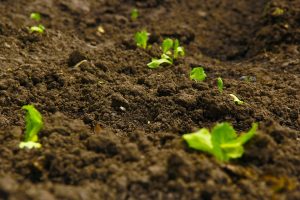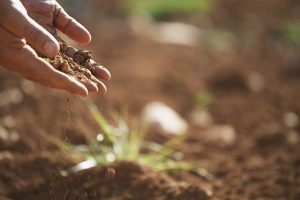It can be easy as a backyard gardener to write your thumbs off as being not particularly green if you’re having issues in your patch. If your veggie garden is producing Barbie Doll sized crops, or your lawn is struggling to cover the dirt, you may find yourself wandering into the room of mirrors for a long hard look.
But it may not be you.
Soil quality is an oft-forgotten part of the plant-growing puzzle. Many a backyard operator will see brown dirt in their yard and just assume that plants will love it. And to be fair, most of the time they will. But if you’ve been looking after your plants with care, doing everything that you’re supposed to, and they’re still not showing the results that you’d expect, you may have a soil issue on your hands.
If your soil isn’t at its best, neither will your plants be. Thankfully, if you’ve found yourself in an unhelpful patch, you can do something about it!

Get To Know the Soil
To paraphrase Sun Tzu’s Art of War, to beat the enemy, you must first know the enemy. That was probably not the best metaphor to use, as ideally you want your soil to make itself more of an ally. But the point still stands – knowing of any existing issues will put you on the path to remedying them.
Soil PH
The first step to getting to know your soil is to test its PH levels. PH is the measure of acidity or alkalinity, given in the form of a scale from 1 to 14, that can be tested with a simple kit that is available at all good nurseries.
A 1 on the scale indicates extreme acidity, while a 14 will indicate extreme alkalinity. A neutral soil will sit at 7, and most plants are adapted to grow well in this stable, neutral environment. There are, however, plants that are adapted to slightly different areas of the scale.
Native Australian plants, for example, will quite happily grow in slightly acidic soils of PH 4.5-6.5, along with citrus plants, rhododendrons and most herbs. For more alkaline environments (between PH 7-8), lavender, lilac and members of the pea family will likely thrive.
While you can use plants adapted to conditions to a point, if your soil PH test comes back with a reading outside of the PH 5-8 range, you may need to consider replacing your soil with something more hospitable.
Soil Texture
What is the make-up of your soil? When we’re talking soil texture, we’re simply referring to the size of the particles that make up the soil, and how well they retain moisture and bond together. Soils range from large particle sand, to small particle clay.
Do this quick test: take a handful of soil, and squish it together in your palm to create a sausage shape. From how it holds together, you should be able to tell if it is:
Sandy Soil – If the soil is sandy it will be crumbly, grainy, and won’t hold its shape well at all. Obviously this will usually be found in coastal areas, and can be improved by adding manure and compost.
Clay Loam – The mid-point between sand and clay, clay loam should hold together well, and is the perfect soil for most plants to thrive in.
Clay Soil – Like you’re in pottery class, clay soil will have a sticky feel to it, and will hold together easily in that sausage shape. While medium clay can be brought back to a useable state with compost and organic matter, if your clay soil is so heavy it’s almost plasticine, it may be easier to dig up and replace.

Soil Drainage
The last part of the soil puzzle is drainage. For healthy plant-life, you ideally want a soil that retains moisture well, without becoming waterlogged too easily.
To test your soil’s drainage, dig a couple of small holes in your garden and fill them with water. If the water drains away quickly and dramatically, you probably have a sandy soil that is leaving your plants thirsty. This can be improved with the addition of mulch or water crystals.
If the water stays there for hours, your soil will be clay and prone to water logging. While the addition of organic matter may help, you may need to consider installing a drainage system.
Whatever your soil diagnosis, there are steps that can be taken to improve it and give yourself the garden you’re looking for.
For the answer to any lawn related soil questions, contact the friendly team at McKays.

 FREE SHIPPING ON ORDERS OVER $50
FREE SHIPPING ON ORDERS OVER $50